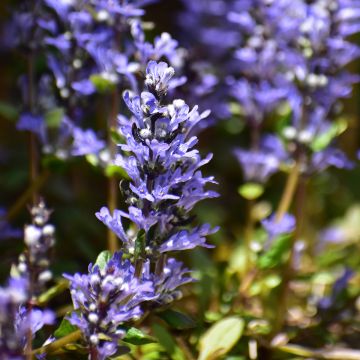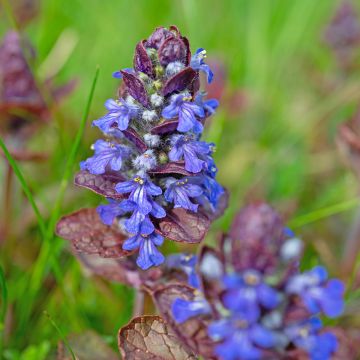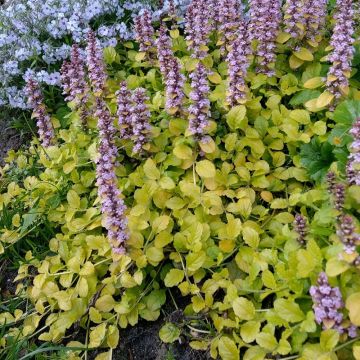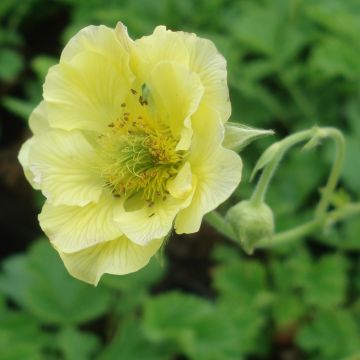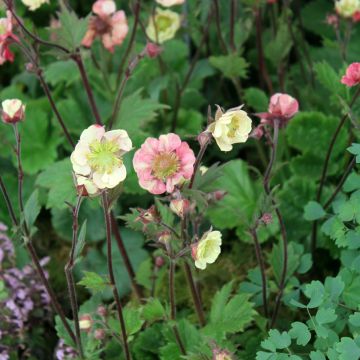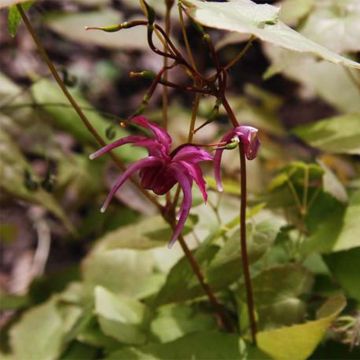

Ajuga reptans 'Alba'
Ajuga reptans 'Alba'
Ajuga reptans Alba
Bugle, Bugleweed, Carpet Bugle, White Bugle, Common Bugle
Arrived in very good condition, no concerns regarding recovery at first glance.
May, 02/10/2023
Special offer!
Receive a €20 voucher for any order over €90 (excluding delivery costs, credit notes, and plastic-free options)!
1- Add your favorite plants to your cart.
2- Once you have reached €90, confirm your order (you can even choose the delivery date!).
3- As soon as your order is shipped, you will receive an email containing your voucher code, valid for 3 months (90 days).
Your voucher is unique and can only be used once, for any order with a minimum value of €20, excluding delivery costs.
Can be combined with other current offers, non-divisible and non-refundable.
Home or relay delivery (depending on size and destination)
Schedule delivery date,
and select date in basket
This plant carries a 12 months recovery warranty
More information
We guarantee the quality of our plants for a full growing cycle, and will replace at our expense any plant that fails to recover under normal climatic and planting conditions.

Would this plant suit my garden?
Set up your Plantfit profile →
Description
The Ajuga reptans 'Alba' is the white form of the creeping bugle, a very widespread perennial in the cool and shady habitats of our region. The plant forms an evergreen to semi-evergreen ground cover that spreads through rooting stems, eventually forming vast fields of dark green rounded leaves that take on bronze highlights over time. Its upright spikes of white flowers appear in spring, surprisingly clear against a backdrop of pretty leaves that adorn the garden in both winter and summer. Vigorous and floriferous, this variety will thrive in moist soil, sheltered from the scorching sun.
The Ajuga reptans is a perennial plant of the labiate family, very common in Europe, especially in its central and northern regions. It is also found in Western Asia and Algeria. Its habitat is typical of meadows and cool, grassy areas.
With rapid growth, the creeping bugle 'Alba' is distinguished by its upright white spikes of flowers. This plant roots itself through its runners and eventually forms a mat 25 to 30 cm (10 to 12in) in height, with a minimum diameter of 50 cm (20in). It develops rosettes of semi-evergreen to evergreen leaves, oblong, wavy and veined, in a dark green colour with a slightly metallic sheen. From the month of May, small spikes of flowers, no more than a few millimetres in size, appear above the foliage. These bilabiate flowers are pure white and are interspersed with small round leaves. They bloom for over a month. Towards the end of the season, the foliage darkens slightly.
The Ajuga reptans 'Alba' is a vigorous variety that will quickly cover the available soil. If it tends to escape the boundaries set for it, its growth is easily controlled by removing the wandering runners. Bugles are among the best ground cover plants; they are perfect for dressing the base of trees and bushes, in shaded beds in combination with spring bulbs (Snowdrops, hyacinths, crocuses) or Lamium with colorful foliage, Epimedium with graceful flowers and beautiful leaves, or Geranium macrorrhizum. They are good companions for hostas and shade-loving perennial geraniums. In cool rockeries, they can be planted next to Acaena 'Blue Haze' or buchananii, Azorella trifurcata 'Nana', lady's mantles, and saxifrages.
Report an error about the product description
Ajuga reptans 'Alba' in pictures




Flowering
Foliage
Plant habit
Botanical data
Ajuga
reptans
Alba
Lamiaceae
Bugle, Bugleweed, Carpet Bugle, White Bugle, Common Bugle
Cultivar or hybrid
Other Ajuga
View all →Planting and care
Not demanding in terms of soil type, this plant does not tolerate prolonged drought well, but on the other hand, tolerates limestone very well. What the 'Alba' variety prefers is cool partial shade or dappled sunlight that enhances the nuances of its foliage, in a moist soil, rich in humus, even clayey if well-drained. Ajuga reptans can be planted all year round, in shaded areas and in moist soil. It is very easy to cultivate and can tolerate any type of soil, from the poorest to the richest. Beware of slugs in spring! They can cause havoc on young plants.
Planting period
Intended location
Care
-
, onOrder confirmed
Reply from on Promesse de fleurs
Similar products
Haven't found what you were looking for?
Hardiness is the lowest winter temperature a plant can endure without suffering serious damage or even dying. However, hardiness is affected by location (a sheltered area, such as a patio), protection (winter cover) and soil type (hardiness is improved by well-drained soil).

Photo Sharing Terms & Conditions
In order to encourage gardeners to interact and share their experiences, Promesse de fleurs offers various media enabling content to be uploaded onto its Site - in particular via the ‘Photo sharing’ module.
The User agrees to refrain from:
- Posting any content that is illegal, prejudicial, insulting, racist, inciteful to hatred, revisionist, contrary to public decency, that infringes on privacy or on the privacy rights of third parties, in particular the publicity rights of persons and goods, intellectual property rights, or the right to privacy.
- Submitting content on behalf of a third party;
- Impersonate the identity of a third party and/or publish any personal information about a third party;
In general, the User undertakes to refrain from any unethical behaviour.
All Content (in particular text, comments, files, images, photos, videos, creative works, etc.), which may be subject to property or intellectual property rights, image or other private rights, shall remain the property of the User, subject to the limited rights granted by the terms of the licence granted by Promesse de fleurs as stated below. Users are at liberty to publish or not to publish such Content on the Site, notably via the ‘Photo Sharing’ facility, and accept that this Content shall be made public and freely accessible, notably on the Internet.
Users further acknowledge, undertake to have ,and guarantee that they hold all necessary rights and permissions to publish such material on the Site, in particular with regard to the legislation in force pertaining to any privacy, property, intellectual property, image, or contractual rights, or rights of any other nature. By publishing such Content on the Site, Users acknowledge accepting full liability as publishers of the Content within the meaning of the law, and grant Promesse de fleurs, free of charge, an inclusive, worldwide licence for the said Content for the entire duration of its publication, including all reproduction, representation, up/downloading, displaying, performing, transmission, and storage rights.
Users also grant permission for their name to be linked to the Content and accept that this link may not always be made available.
By engaging in posting material, Users consent to their Content becoming automatically accessible on the Internet, in particular on other sites and/or blogs and/or web pages of the Promesse de fleurs site, including in particular social pages and the Promesse de fleurs catalogue.
Users may secure the removal of entrusted content free of charge by issuing a simple request via our contact form.
The flowering period indicated on our website applies to countries and regions located in USDA zone 8 (France, the United Kingdom, Ireland, the Netherlands, etc.)
It will vary according to where you live:
- In zones 9 to 10 (Italy, Spain, Greece, etc.), flowering will occur about 2 to 4 weeks earlier.
- In zones 6 to 7 (Germany, Poland, Slovenia, and lower mountainous regions), flowering will be delayed by 2 to 3 weeks.
- In zone 5 (Central Europe, Scandinavia), blooming will be delayed by 3 to 5 weeks.
In temperate climates, pruning of spring-flowering shrubs (forsythia, spireas, etc.) should be done just after flowering.
Pruning of summer-flowering shrubs (Indian Lilac, Perovskia, etc.) can be done in winter or spring.
In cold regions as well as with frost-sensitive plants, avoid pruning too early when severe frosts may still occur.
The planting period indicated on our website applies to countries and regions located in USDA zone 8 (France, United Kingdom, Ireland, Netherlands).
It will vary according to where you live:
- In Mediterranean zones (Marseille, Madrid, Milan, etc.), autumn and winter are the best planting periods.
- In continental zones (Strasbourg, Munich, Vienna, etc.), delay planting by 2 to 3 weeks in spring and bring it forward by 2 to 4 weeks in autumn.
- In mountainous regions (the Alps, Pyrenees, Carpathians, etc.), it is best to plant in late spring (May-June) or late summer (August-September).
The harvesting period indicated on our website applies to countries and regions in USDA zone 8 (France, England, Ireland, the Netherlands).
In colder areas (Scandinavia, Poland, Austria...) fruit and vegetable harvests are likely to be delayed by 3-4 weeks.
In warmer areas (Italy, Spain, Greece, etc.), harvesting will probably take place earlier, depending on weather conditions.
The sowing periods indicated on our website apply to countries and regions within USDA Zone 8 (France, UK, Ireland, Netherlands).
In colder areas (Scandinavia, Poland, Austria...), delay any outdoor sowing by 3-4 weeks, or sow under glass.
In warmer climes (Italy, Spain, Greece, etc.), bring outdoor sowing forward by a few weeks.
































